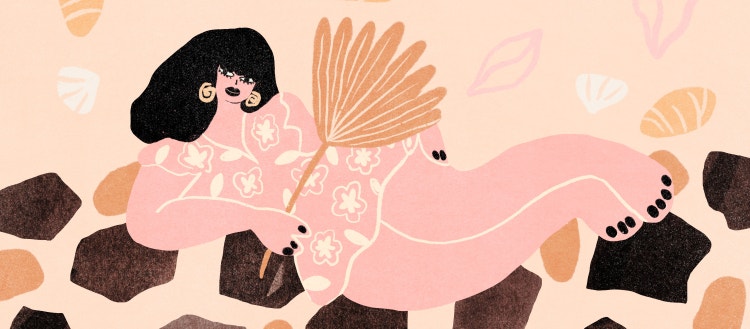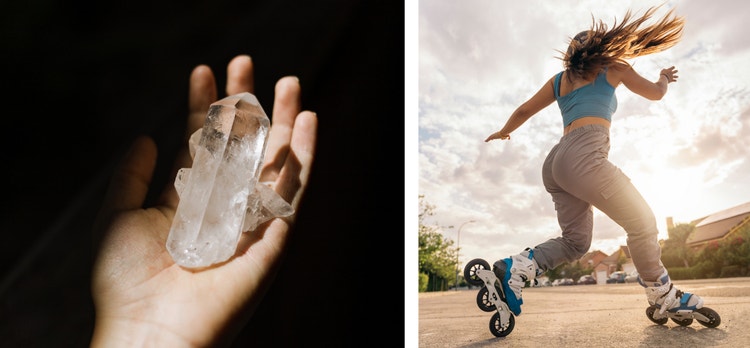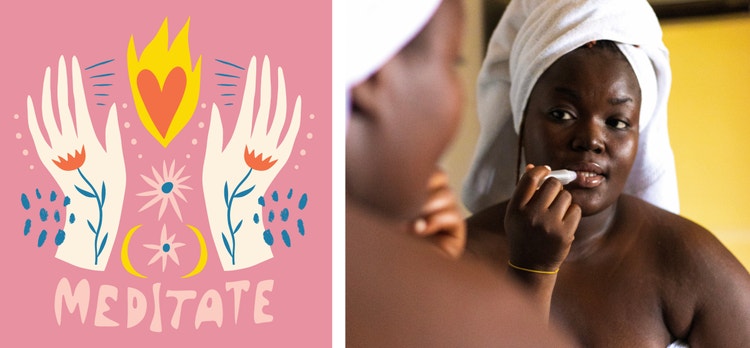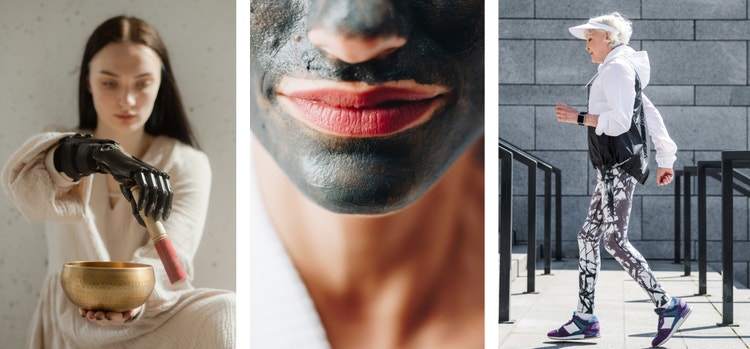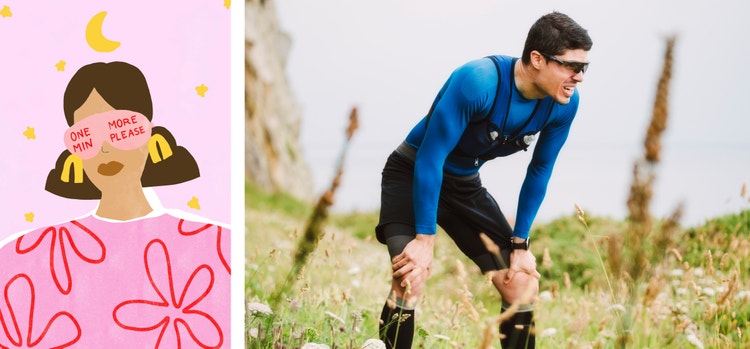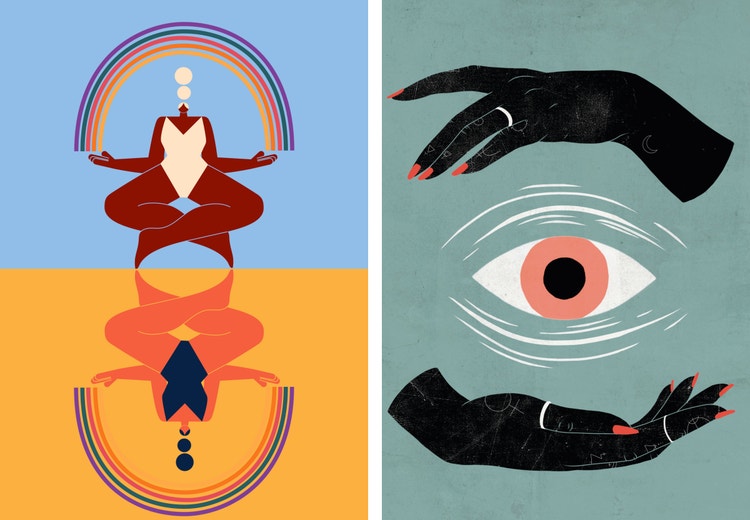Concepts of health, wellness, and healing are perennial themes within visual branding, but they are enjoying a particular renaissance today, as the world collectively faces public health crises that have made self-care more than just a buzzword or a beauty trend.
“10 years ago, it was really about the perfect form, the perfect pose, and picturing the most fit body possible,” says Desireé Rosario-Moodie, curator and content development lead for Adobe Stock. “Now it's a little less about that, and it's more about the effort, more about incorporating health and wellness into your actual lifestyle.”
With new focus comes new opportunities for stock imagery to diversify the visual language of health and wellness, and broadly speaking, there are two clear pathways to opening the field: showing more diverse participants and body types — and opening the very definition of health and self-care to include more activities.
Adobe Stock Advocates : Healing Reflections
Explore the many ways we journey inward to soothe the wounds of our psyches.
Upload your healing and self-care illustrations, videos, and photos to Adobe Stock.
Learn more
A healthy range of options
By depicting a wider range of people modeling classic self-care experiences — including yoga, gardening, healthy eating, nature walks, meditation, and exercise — we can address the idea that health and wellness are available to more than just highly active, able-bodied, young, mostly-white cis people in expensive workout gear.
“It's more bodies, more people, different casting,” says Rosario-Moodie. “We're repopulating the stock imagery that we have with different kinds of people with different kinds of abilities.”
There is both a commercial and cultural appetite for imagery that reflects people of all ages — especially those 65 and older — and all body types engaging in activities that have been traditionally framed as reserved for a narrow range of participants. But there is also a loosening up of limitations on what constitutes healthy behavior, with trends that support wellness in fun ways, like roller-skating, journaling, and dancing.
“We have our evergreen ideas of what health and wellness is,” says Rosario-Moodie, “but now wellness could be me joyfully jumping on my trampoline — and maybe that's exercise and it's also sort of nostalgic, it's calling back to childhood, and it's doing these things that are making me feel good.”
A tradition of healing
In addition to looking toward childhood for inspiration, new visual trends in the health and wellness space embrace a return to one’s cultural heritage to learn about forms of healing. From grandma’s chicken soup recipe, to more structured forms of naturopathy handed down through families, there is a wealth of cultural information that is waiting to be brought to the visual marketplace. With DNA testing becoming more accessible than ever, people are deeply interested in learning where they come from, and going beyond that to find healing modalities connected to their family or bloodlines.
“There is a lot of interest in investigating family history and cultural history,” says Rosario-Moodie. “Seeking knowledge or retaining is also a part of wellness which we might not have thought of before we were in lockdown.”
In searching for wellsprings of cultural knowledge, the Adobe Stock Advocates program and Artist Development Fund have a unique ability to promote and commission such visual catalogs directly from the source.
“One of the strengths and the real beauty, I think, of the Artist Development Fund is that these are artists that could be of any background, any age, who are being provided the means to work on projects that they have a personal connection with,” says Brenda Milis, principal of Consumer and Creative Insights for Adobe Stock. “It could be a very close connection, or it could be just a passion of theirs, but it does represent a community that they are part of — and that's really exciting.”
Keeping it real
The proximity between Artist Development Fund commissioned artists and the communities they represent not only dismantles visual colonization and fetishization of cultural spaces and practices, it imbues stock imagery with a higher degree of intimacy and authenticity. There is great demand for realness, in a media climate that is increasingly polarized around ideas of factual accountability, and that is manifesting in a new wave of social media protocols.
Apps like BeReal, which asks users to post within two minutes of receiving a random prompt during the day, reflect a desire to see the reality of their lives, rather than cherry-picked and staged images to incite social media envy. Likewise, stock imagery is no longer simply interested in only the “perfect” shot, but also images that capture the effort involved in that mountaintop moment.
“We do want that one image that tells the whole story, that perfect image, the one that's the showstopper, the one that's the cover, the one that's the feature,” says Rosario-Moodie. “But we also want the other ones that tell the story up until you get to the triumphant part, or you get down to the lowest part. Because the story is not going to be the same for every single buyer.”
“That might be the motivating picture for an ad,” she continues. “We want to see exhaustion, too, because that's also part of, say, running a seven-minute mile. People want to see the effort because they can relate to it.”
Trends like these represent a decentralizing of perfection as aspirational and focus on the reality of daily effort that is the bedrock of sustainable health and wellness. One cannot maintain healthy habits without routine, consistency, and repetition — the challenge within the Healing Reflections is to find the beauty and excitement within such patterns.
Illustrate the point
While wellness can be associated with many activities, some forms of health — especially mental health — are an inside job. This makes the health and wellness space a particularly terrific opportunity for illustrators, who can not only represent a truly universal cast of characters, but to highlight their inner struggles and triumphs in graphic terms.
“If you open up the New York Times in the wellness section, or the Washington Post, or Psychology Today, it's all illustrations,” says Rosario-Moodie. “When things of the mind are talked about, it's either illustration or some sort of surreal or conceptual photography that happens.”
Heal one, heal all
With wellness at the forefront for many people who keep an eye on public health news, there is an audience for visions of self-care and healing that are inclusive, joyful, and diverse. As Milis says, there is a real opportunity to participate in creating a visual canon that brings more health to more people.
“The thing that I love with the healing theme is that the very notion of finding balance and to be whole and to be healthy has shifted. How do we heal, what is health — it's not just about the body, but also mind, spirit, soul, emotions, and mental health. All of that is finally becoming mainstream. The combination of the artists who are creating projects that are related to this topic, and the evolution of the topic itself is exciting.”
Get inspired with the Healing Reflections creative brief. Then upload your original illustrations, photos, and video clips exploring mental and physical healing or self-care to Adobe Stock.
